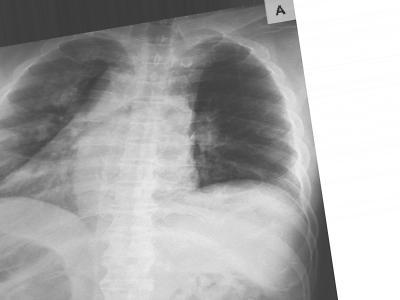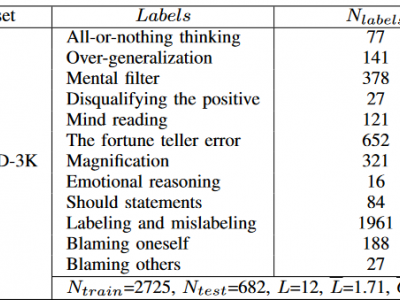Health
This dataset contains Wi-Fi sensing data using Channel State Information (CSI) for various sleep disturbance parameters, from respiratory disturbances, to motion-based disturbances from posture shifts, leg restlessness and confusional arousals.The Wi-Fi CSI data was collected using the Wi-Fi module on the ESP32 Microcontroller units using the esp32-csi-tool.The Wi-Fi CSI respiratory disturbance data is accompanied by respiration belt data taken with the Wi-Fi measurements simultaneously using the Neulog NUL-236 respiration belt logger as ground truth.
- Categories:
 1150 Views
1150 ViewsThe "Burn Depression Checklist Dataset" is a comprehensive dataset designed to aid in the analysis and understanding of depressive symptoms. The dataset is comprised of 2,600 entries, each corresponding to a unique individual, with 25 features that encapsulate various dimensions of depression, ranging from emotional and psychological symptoms to behavioral patterns.
- Categories:
 876 Views
876 Views
Normal 0 false false false EN-US X-NONE X-NONE /* Style Definitions */ table.MsoNormalTable {mso-style-name:"Table Normal"; mso-tstyle-rowband-size:0; mso-tstyle-colband-size:0; mso-style-noshow:yes; mso-style-priority:99; mso-style-parent:""; mso-padding-alt:0in 5.4pt 0in 5.4pt; mso-para-margin-top:0in; mso-para-margin-right:0in; mso-para-margin-bottom:8.0pt; mso-para-margin-left:0in; line-height:107%; mso-pagination:widow-orphan; font-size:11.0pt; font-family:"Calibri",sans-serif; mso-ascii-font-family:Calibri; mso-ascii-theme-font:minor-latin; mso-hansi-font-family:Calibri; mso-hansi-the
- Categories:
 47 Views
47 ViewsThis dataset contains gait analysis data from 120 healthy individuals, aimed at assessing and quantifying overall gait quality through a novel gait index. Key gait parameters include walking speed, maximum knee flexion angle, stride length, and stance-swing phase ratio. Additionally, demographic information such as gender, age, height, weight, and BMI is provided for each subject. These parameters were systematically selected for their significance in indicating gait mechanics and deviations from normal gait patterns.
- Categories:
 776 Views
776 ViewsThis dataset named "Chest X-ray images for Multiple diseases" is a medium sized dataset we collected and produced in 2024 from various sources to predict various Chest-X-ray diseases using Deep learning techniques, primarily from Radiopaedia.org, coronacases.org, Kaggle contains 1000 images for each of the disease namely TB,pneumonia,Covid-19,Normal. This dataset is designed to support the evaluation and development of algorithms to predict various chest x-ray diseases.
- Categories:
 1448 Views
1448 Views
- Categories:
 78 Views
78 Views
The Comprehensive Patient-Health Monitoring Dataset is an extensive collection of health-related data gathered from remote monitoring systems between June 4, 2023, and October 4, 2023. This dataset comprises 10,000 samples, each meticulously recorded at ten-minute intervals, capturing a diverse array of vital signs and health metrics crucial for patient care and medical research.
- Categories:
 3436 Views
3436 ViewsWe sourced our data by crawling comments from the “Zoufan” blog within the Weibo social platform. Subsequently, a team of qualified psychologists were enlisted to annotate the data. In our study, strict data preprocessing measures were adopted to protect users’ privacy.
SocialCD-3K (Cognitive Distortion Classification)
- Categories:
 359 Views
359 ViewsWe sourced our data by crawling comments from the “Zoufan” blog within the Weibo social platform. Subsequently, a team of qualified psychologists were enlisted to annotate the data. In our study, strict data preprocessing measures were adopted to protect users’ privacy.
SOS-HL-1K (Suicide Risk Classification)
- Categories:
 131 Views
131 Views



